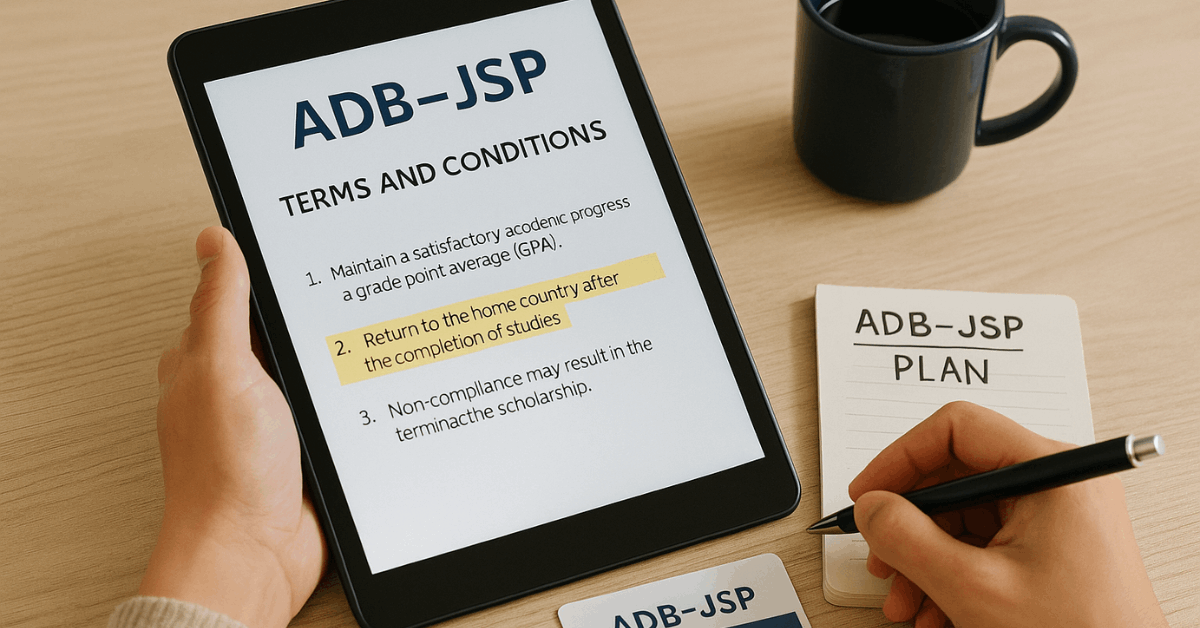Scholarship programs vary in audience, process, and coverage, so a focused approach prevents missed deadlines and wasted effort.
Strong results come from matching stated criteria, assembling accurate documents early, and following institutional steps in order. Clear tracking of requirements helps you protect eligibility and present a competitive application.
Quick Overview
Scholarship programs differ in who they target, how candidates apply, and what expenses they fund, so a tight plan increases your odds and keeps time-wasting to a minimum.

Strong applications package accurate documents, match stated criteria, and meet deadlines set well in advance of the intake date.
Eligibility And Common Requirements
Missing even one required item can derail an application that otherwise fits the program well. Use the points below to align your profile and documents with typical scholarship expectations.
Basic Information
Most programs request full legal name, home address, email, phone, date of birth, and current school details, and accurate entries matter because incorrect contact data can block award notifications or follow-up requests.
Simple forms that only ask for contact details are worth submitting because fast wins occasionally come from low-effort applications.
Financial Details
Need-based programs usually require income and asset information for you and, where applicable, your parents or guardians, because reviewers use this to assess demonstrated need. U.S. programs often reference the FAFSA and the Student Aid Index to gauge eligibility and determine potential award sizing.
Essays
Many sponsors ask for a short essay responding to a prompt about goals, impact, or fit, and tight adherence to the stated word count, topic, and formatting prevents easy disqualification.
Draft ideas, write clearly, and ask a teacher or mentor to review for coherence, specificity, and proof that your experiences match the award’s purpose.
Transcripts
Merit-based awards routinely require official or unofficial transcripts to verify GPA, course rigor, honor roll, or test results, and renewal-eligible awards often recheck transcripts to confirm continued academic standing.
Slipping below a stated GPA floor can trigger loss of funding, so proactive academic support helps protect multi-year awards.
Binding Contracts
Some awards attach conditions beyond enrollment, including minimum GPA maintenance, service commitments, or post-graduation work requirements in specific schools, regions, or professions.
State teacher grants commonly require several years of service after graduation, and exiting early or failing to meet terms can convert funds to a repayable obligation.
Letters Of Recommendation
Strong programs frequently request one to three letters from people who can speak to your strengths relevant to the award’s focus, such as coaches for athletic scholarships or teachers in the intended major for academic grants.
Clear guidance to recommenders about deadlines and focus areas improves alignment and letter quality.
Further Proof After Shortlisting
Finalists are often asked to verify citizenship or residency, location, age or level of study, academic achievements, extracurricular participation, or additional financial circumstances, and some proof may require notarized letters or official certificates.
Keeping digital copies of IDs, test reports, club certifications, and volunteer logs shortens turnaround times when committees request confirmation.
Other Possible Requirements
Less common requests include a childhood or recent photo, a short video, an art portfolio, a résumé, a cover letter, SAT or ACT scores, or documentation related to immigration history or intended major.
Niche awards sometimes include unusual prompts, so careful reading prevents missed items that would otherwise invalidate a submission.
Application steps
Rushed applications cause avoidable errors, while clear sequencing keeps every document consistent and on time.
- Gather documents early, including IDs, transcripts, test scores, financial records, activity logs, and recommender details, and build a single folder that mirrors application fields for quick reuse.
- Apply through the target academic institution when programs require institutional endorsement, and include any program-specific forms such as the ADB–JSP application sheet.
- Submit accurate and complete materials at least six months before the planned intake, because institutional screening and sponsor review take time.
- Provide financial proofs such as the latest income tax return, salary certifications, and a statement of family income when required, ensuring figures match across all uploaded documents.
- Monitor email and phone for follow-ups, respond quickly to requests for verification, and keep copies of every submission to resolve discrepancies without delay.
Selection process: ADB–JSP Example
Competitive programs often apply layered reviews that combine institutional vetting and sponsor approval, so staying responsive matters throughout.
Institutional Screening And Ranking
Partner universities screen and rank candidates using their criteria while honoring sponsor rules, and evaluators may contact shortlisted candidates for clarifications or additional documents.
Ranking submissions generally include a description of the scoring or grading system used to justify recommendations sent to the sponsor.
Sponsor Review And Approval
ADB reviews university nominations against ADB selection criteria and recommends awardees to the Executive Director for Japan for formal approval, and universities then receive the official list of successful candidates.
After notification, institutions coordinate acceptance signatures in which scholars agree to terms such as returning to their home country after study.
Communication And Onboarding
Universities inform all applicants of outcomes, organize award acceptance steps, and coordinate any sponsor letters, including congratulatory notices sent via the university.
Keeping travel, enrollment, and compliance steps aligned with the award letter avoids delays that could jeopardize funding start dates.

Award Amounts and Coverage
Choices about funding vary across sponsors, so planning around what is covered versus excluded helps avoid budget shocks.
| Topic | What to expect |
| Amount basis | Award sizing often reflects merit and financial need, institutional costs, and available funds, and need-based programs may reference FAFSA data or a cost-of-attendance gap. |
| Disbursement | Timing and channel depend on the institution and sponsor, and funds may credit tuition first with any stipend paid on a monthly or term schedule. |
| Ongoing eligibility | Continued funding commonly requires maintaining a stated GPA, full-time or defined enrollment status, and adherence to any service obligations in signed agreements. |
| ADB–JSP exclusions | Family expenses, extra-curricular courses or training, additional travel during study, supplementary materials or workshops, internships, and equipment such as personal computers are not covered. |
Documentation Checklist
Tight documentation control lowers the risk of last-minute scrambles and inconsistent details.
- Academic records such as transcripts, standardized test reports, and academic awards are verified against application entries.
- Financial proofs, including FAFSA results where applicable, tax returns, salary certifications, and relevant statements covering family circumstances.
- Personal statements tailored to each prompt, alongside a concise résumé and, when relevant, a portfolio or video.
- Letters of recommendation are requested early, with clear instructions and confirmed delivery before the deadline.
- Identity and status confirmations, such as citizenship or residency proof, local address verification, and age or enrollment status documents.
ADB–JSP Application Specifics
Applications go through the academic institution rather than ADB directly, and only admitted and endorsed candidates are considered by ADB.
Forms and academic records must reach the institution at least six months before the intended intake, and inaccurate or false documentation can halt processing or terminate an award later.
Institutions coordinate acceptance documents that include a commitment to return to the home country after completion, so plans should account for that obligation before proceeding.
Award Strategy And Criteria
Clear criteria shape who applies, how reviewers decide, and how funds achieve mission outcomes, so well-designed rules protect fairness and impact.
Common components include academic metrics, financial need, merit and leadership, and demographic or geographic focus, and weighting should match mission priorities rather than defaulting to rigid GPA cutoffs.
Proper Measurable Inputs and Documentation Workflows
Rubrics with explicit descriptors for exceptional, strong, adequate, and needs improvement levels enable consistent scoring, while evaluator training reduces variance and strengthens defensibility.
Overly restrictive combinations, vague requirements, or undocumented procedures create bottlenecks and inconsistent outcomes, so measurable inputs and documented workflows keep decisions transparent.
Implementation, Monitoring, And Fairness
Technology can remove administrative friction and improve accuracy, so a scholarship management system that automates eligibility screening, tracks documents, calculates weighted scores, and coordinates reviewer collaboration saves time at scale.
Clear communication plans should highlight eligibility, deadlines, document formats, evaluation basics, and award terms, reducing confusion and incomplete submissions.
Non-Discrimination and Laws
Strong compliance practices must meet non-discrimination and privacy laws, protect sensitive financial data, and maintain auditable records of decisions, while periodic reviews track application completion rates, diversity metrics, winner outcomes, long-term impact, and operational efficiency.
Annual criteria reviews, stakeholder feedback, and market scans keep programs aligned with changing educational needs and budget realities.
Key Cautions And Final Reminders
Completion of an institution’s application does not guarantee scholarship selection, and actions like resigning from employment should wait until a formal award notice arrives.
Programs frequently reject late or incomplete submissions without appeal, so calendar blocks, submission checklists, and early recommender requests provide simple insurance against avoidable misses.
GPA Maintenance
Terms that include GPA maintenance or post-graduation service should be evaluated alongside career goals and personal obligations to avoid later conflicts that could trigger repayment.
Accurate, timely, and verifiable information across all documents remains the single most controllable factor in winning and keeping an award.
Conclusion
Prioritize accuracy, timing, and alignment with each sponsor’s rules to avoid rejections and repayment triggers.
Keep a single document set updated, respond quickly to verification requests, and confirm every entry matches across forms and transcripts. Careful planning and organized files position you for more approvals and help you start studies on time.




















